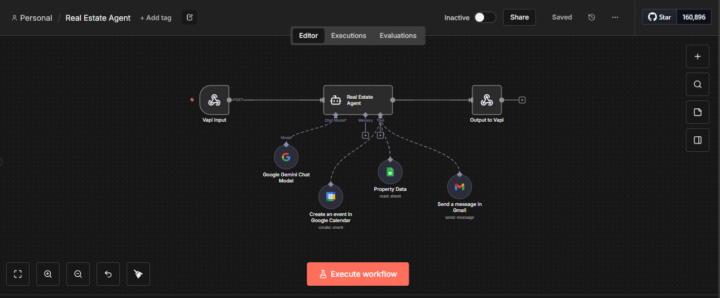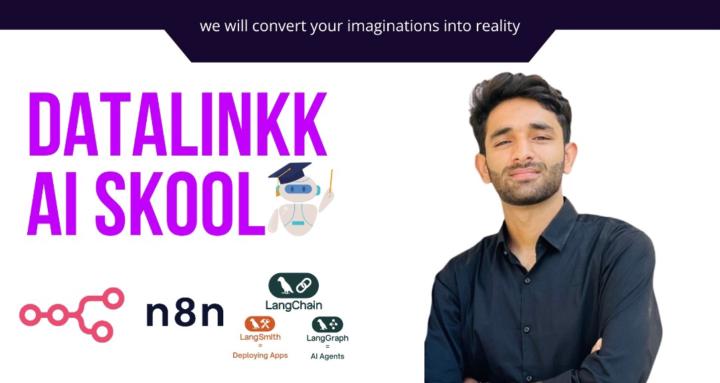
Write something
AI Powered Real Estate Agent
🚀 Just built an AI Powered Real Estate Agent, fully automated with Vapi, n8n and Google Workspace! I’ve been experimenting with conversational AI agents lately, and this one feels like a big milestone. Here’s a quick look at my latest project 👇 🏡 AI Real Estate Agent (End to End Automation) This workflow turns a simple voice or chat query into a complete real estate search and booking experience. The agent can: ✨ Understand what kind of property the user wants ✨ Search live property listings from Google Sheets(Property Data) ✨ Check available viewing slots ✨ Automatically schedule appointments in Google Calendar ✨ Send confirmations through Gmail ✨ Hold natural and human like conversations Everything runs inside a clean n8n workflow, with Vapi for voice and Gemini handling the conversational logic. 🔧 Tech Used: n8n, Google Sheets, Google Calendar, Gmail, Gemini Model, Vapi AI 💬 The best part? The agent feels like a real property consultant. Just tell it your budget or location and it takes care of the rest. If you’re interested in AI automation, real estate tech or building conversational agents, I’d love to connect and share the workflow.

🚀 Built an AI-Powered Gmail Support Automation with n8n + LLMs
I just finished building an end-to-end AI customer support workflow using n8n, and I’m really excited about how powerful and clean this setup turned out. 🔧 What this workflow does: 📩 Monitors Gmail in real time using a Gmail Trigger 🧠 Classifies incoming emails (Customer Support vs Other) using an LLM 🤖 Automatically generates friendly, human-like replies for support emails 📚 Uses a Pinecone vector knowledge base (FAQ & policies) for accurate answers ✍️ Responds as a branded support agent (“Mr. Helpful from Tech Haven Solutions”) 🏷️ Applies Gmail labels automatically for better inbox organization ⛔ Non-support emails are safely ignored 🛠 Tech Stack: n8n (workflow orchestration) OpenAI GPT-4o & OpenRouter (LLMs) LangChain nodes (agents, classifiers, tools) Pinecone (vector database for RAG) Gmail API (triggering & labeling) 💡 Why this matters: This setup drastically reduces manual support workload while still keeping responses: Context-aware Knowledge-grounded Brand-consistent Fast ⚡ It’s a great example of how AI agents + RAG + automation can deliver real business value—not just demos. If you’re exploring AI automation, n8n workflows, or LLM-powered customer support, I’d love to connect and exchange ideas. hashtag#AI hashtag#n8n hashtag#Automation hashtag#CustomerSupport hashtag#LLM hashtag#RAG hashtag#OpenAI hashtag#Pinecone hashtag#NoCode hashtag#LangChain hashtag#EmailAutomation

1-30 of 45
powered by

skool.com/qya-automations-1935
DataLinkk AI Skool: Your go-to hub for mastering automation using n8n, Make.com, LangChain, LangGraph, and LangSmith for GenAI.
Suggested communities
Powered by


